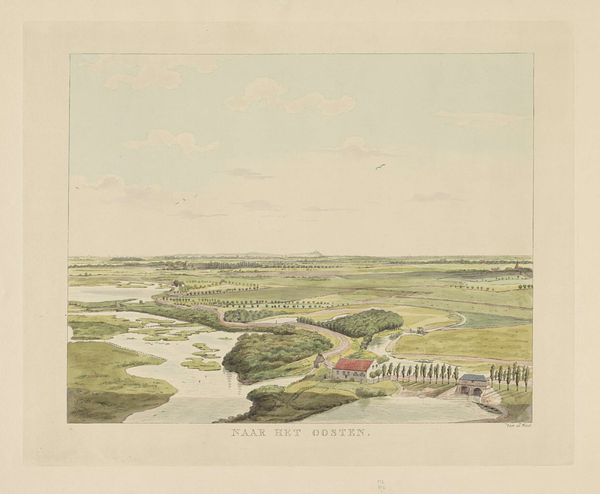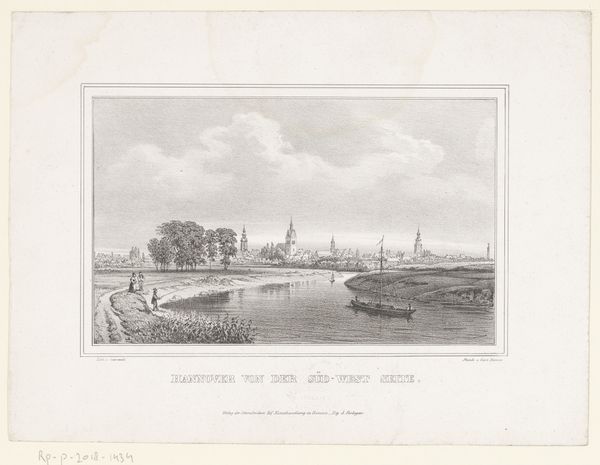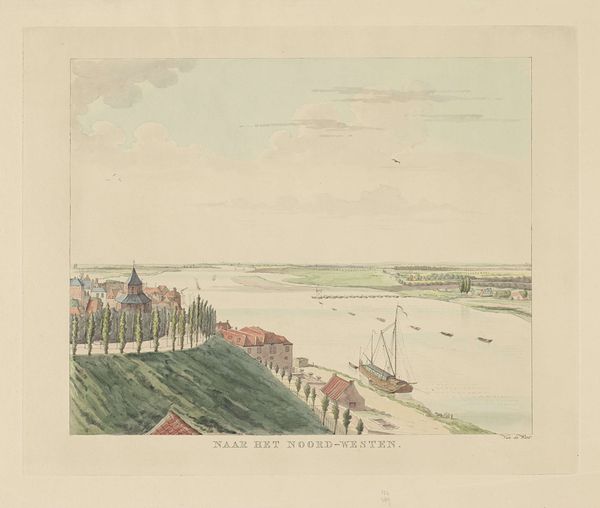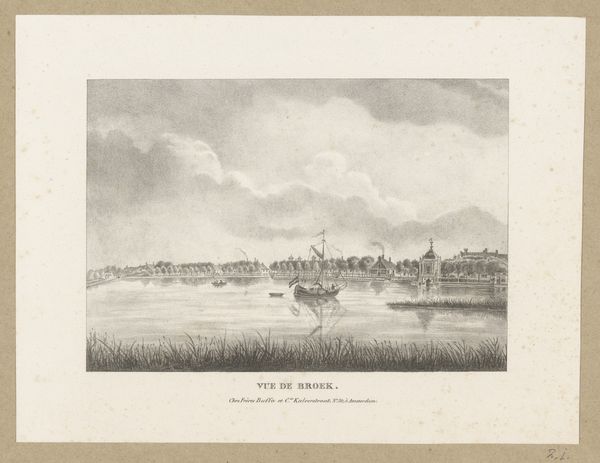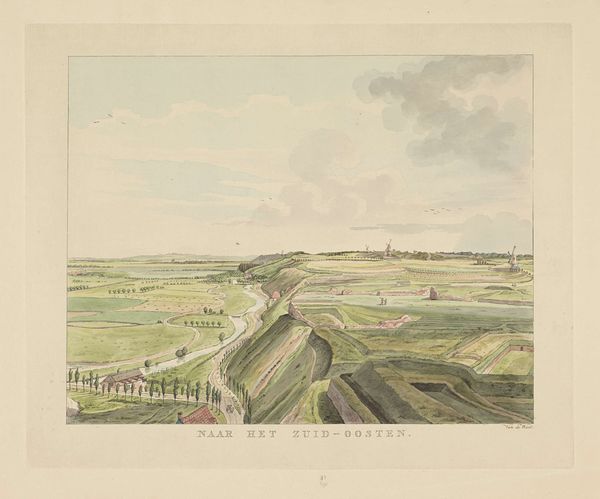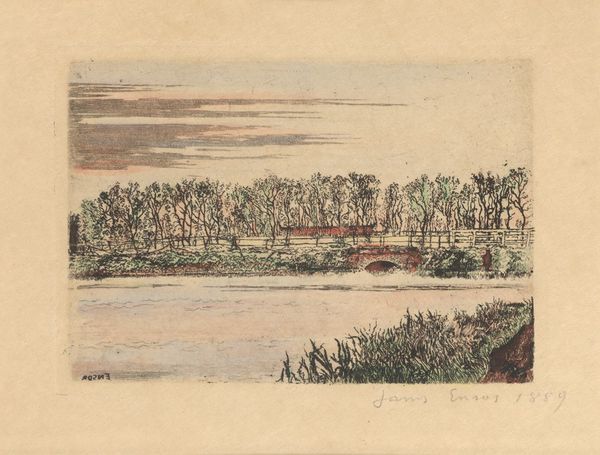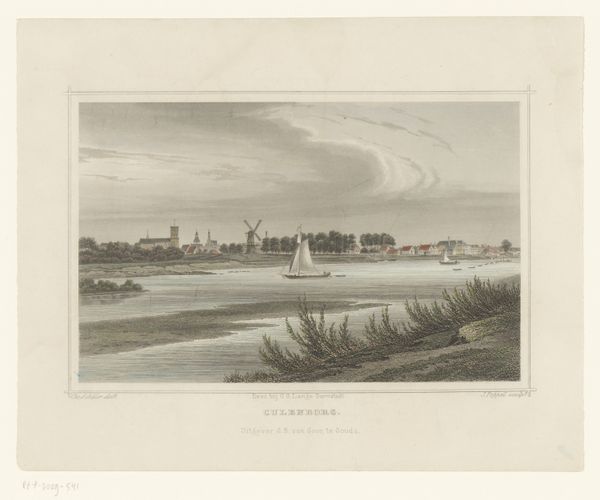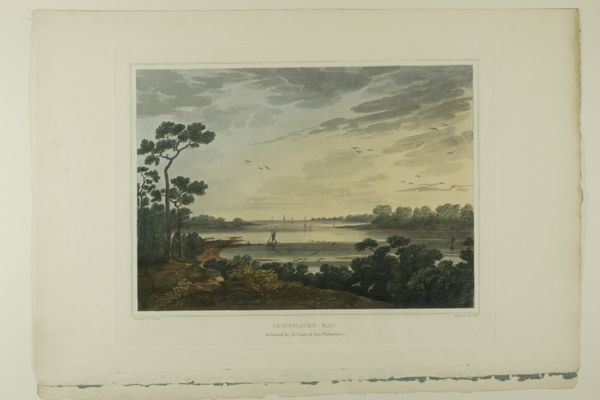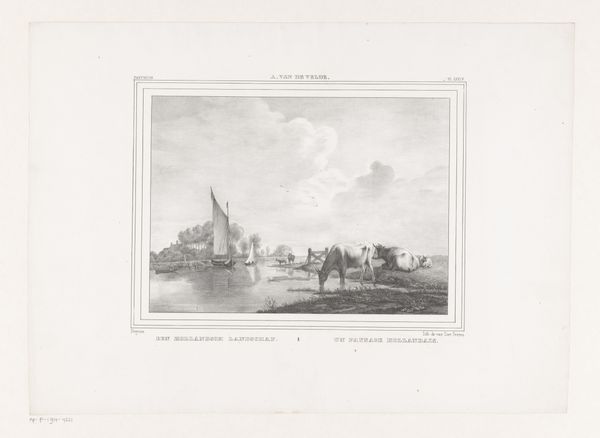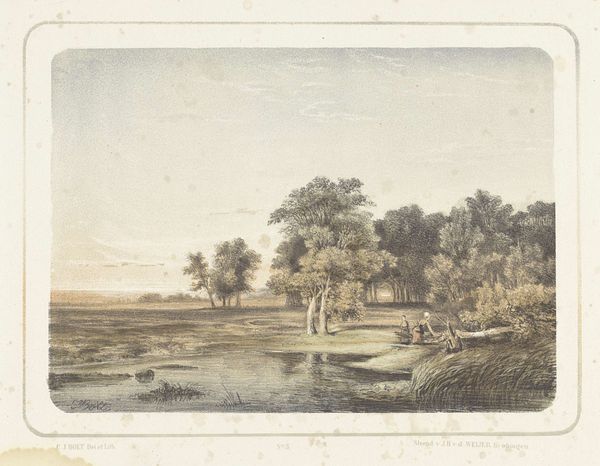
plein-air, watercolor
#
water colours
#
plein-air
#
landscape
#
watercolor
#
romanticism
#
watercolour illustration
#
watercolor
Dimensions: height 317 mm, width 363 mm
Copyright: Rijks Museum: Open Domain
Editor: This watercolor, "View of the Waal northeast of Nijmegen," created between 1815 and 1824 by Derk Anthony van de Wart, feels incredibly spacious. The subtle color palette makes me wonder what you see in it from a compositional perspective? Curator: Note the artist's masterful manipulation of atmospheric perspective. Observe how the subtle gradations in tone and hue create depth, drawing the eye from the foreground to the distant horizon. The strategic placement of the river and the land masses structures a rhythmic visual pathway for the eye. How do you read this compositional choice? Editor: I suppose it is an invitation for my gaze to wander to the distance and enjoy all that the landscape offers, not focusing on any single element. But is there any intentional tension or harmony in this piece, perhaps with the river's curves? Curator: Precisely. Notice also how the subdued palette reinforces a sense of harmony and tranquility. Yet, if you look closer, you'll detect subtle variations and contrasts in the brushwork, which introduce dynamism to the scene, as in the different textures of the water and of the grass. Editor: So, the artist creates visual interest through these subtle textures rather than bold color choices, lending the painting its unique character? Curator: Exactly. And it's this close attention to the intrinsic visual elements that elevates the landscape. What did you learn? Editor: To appreciate how subtle variations in color and texture, and compositional techniques like the use of the atmospheric perspective, can affect the viewing experience. Curator: Agreed. This artwork encourages us to investigate the nuances of form and technique.
Comments
No comments
Be the first to comment and join the conversation on the ultimate creative platform.
